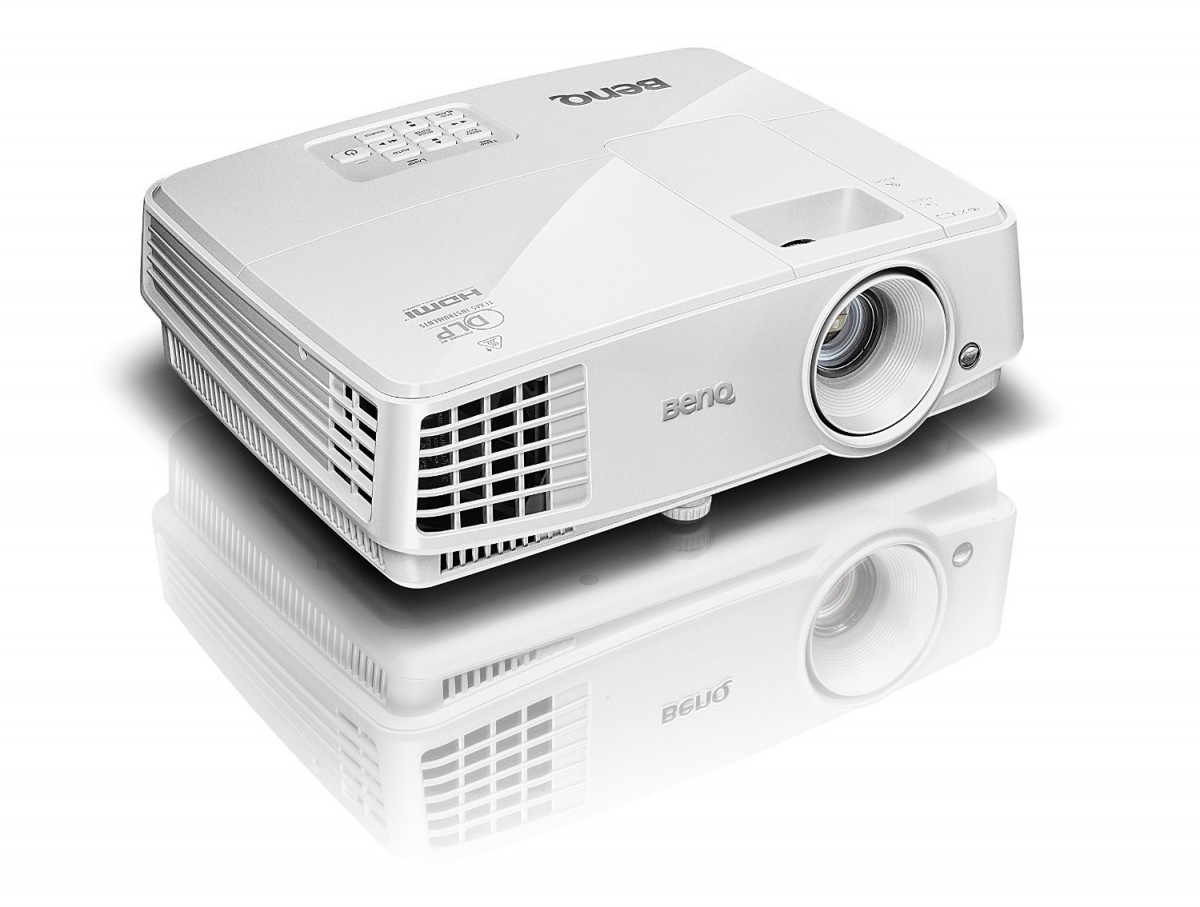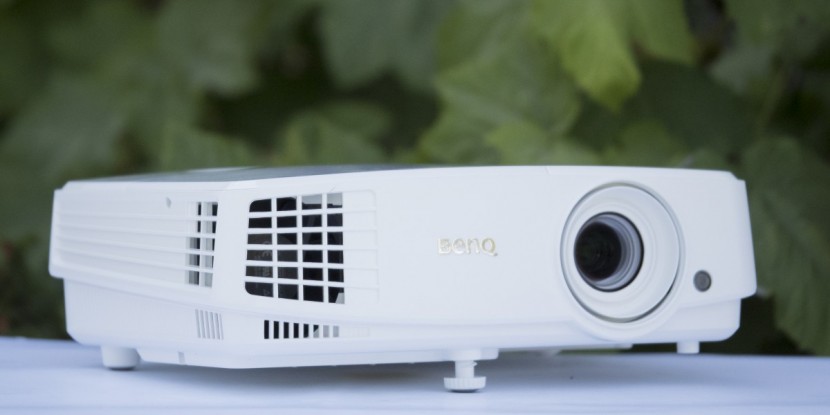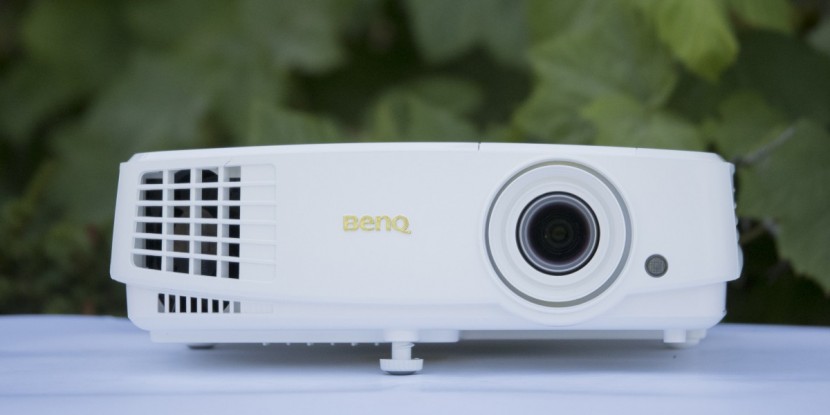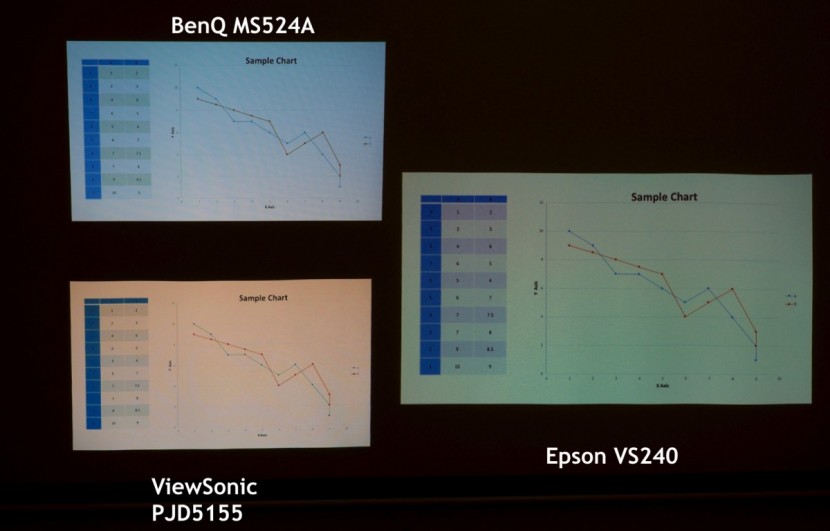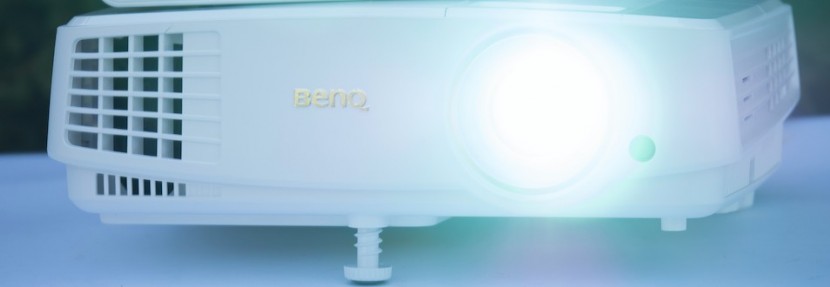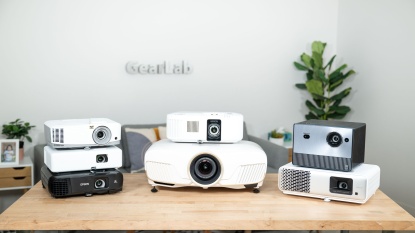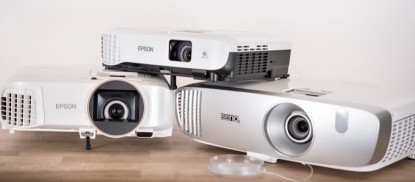BenQ MS524A Review
Our Verdict
Our Analysis and Test Results
Image Quality
The MS524A had by far the best contrast ratio of any of the inexpensive SVGA models we tested. I earned a score of 4 out of 10 in this metric, which saw scores ranging from 3 to 8.
In our testing it produced deep blacks and vivid colors, giving a sense of vibrancy to both light and dark scenes. It did particularly well with bright indoor scenes. Where its other low price competitors made interiors look washed out with a blueish tint, the MS524A rendered bright colors that looked true and sharp. This quality transferred to landscape scenes as well. Where many models imbibed bright scenery with a reddish haze, the MS524A remained sharp and lifelike. In terms of color composition the MS524A actually rivaled some of the much more expensive models we tested. Where it lost points was in resolution. The SVGA 800 x 600 resolution just can't match the brilliance of 1080p images, which have more than 4 times the amount of pixels to work with. That's isn't to say the MS524A makes images look grainy. During our testing many of the testers brought projectors home to watch movies, and all were satisfied with the MS524A's quality. However, once it was brought back into the testing lab and projected side by side with a 1080p model, the difference was stark. The disparity in resolution is about the same as going from a standard definition TV to a high definition one. Very few people were unsatisfied with the resolution of their standard definition TVs until they saw them side by side with their HD counterparts in a department store. So if you can quell your subconscious from reminding you that the image could look better, you'll most likely be happy with the resolution. This lower resolution translates to text as well. Text heavy slides were completely readable, but looked just slightly fuzzy when projected at larger sizes. However, the text still looked more crisp than the other two SVGA models we tested. Additionally, the 4:3 aspect ratio of the SVGA resolution doesn't match up with most modern computer screens, which are 16:9. That means your computer screen gets scaled oddly when plugged into the projector. This is not a major issue, just a slight annoyance that is not present in higher end models.
Ease of Use
The MS524A is one of the many models that earned the average score of 6 out of 10 in our ease of use testing. This metric did not offer much differentiation between models as scores ranged only from 5 to 7.
The MS524A is far and away the most portable model we tested. Weighing in at just 4.2 pounds it is easy to tote around. Its shape also makes it fairly easy to slide into a laptop bag or backpack. The height of the front leg adjusts by screwing it in and out. This isn't as easy as the mechanisms on some other models, but is not difficult either. The back legs are not adjustable, which can raise an issue if the projector is placed on an unlevel surface. Both the focus and zoom knobs feel solid and are smooth enough to make minute adjustments. The 1.2X zoom is average and provides enough versatility for most viewing situations. Vertical keystone correction is adjusted by accessing on screen menu, either via the remote or the built in controls. A dedicated keystone control would be better for people who move their projector around a lot, but it's certainly not a dealbreaker.
The remote control is utilitarian, but nothing to write home about. It is not backlit and has fairly small, hard to read text. However, the buttons are well laid out and easy to press. Most of the functionality is contained in an onscreen menu rather than on the remote. Large arrow buttons allow you to easily navigate this onscreen menu, so the small text on the remote is not much of an issue.
Brightness
The MS524A was the brightest projector we tested, sharing the top score of 9 out of 10 in a metric that had scores as low as 4.
We measured it at 2742 lumens, which was just barely surpassed for the highest reading in our test. It was also quite close to the manufacturer's claim of 3200 lumens, and outpaced the dimmest model by over 1200 lumens. When projecting texts and graphs in a lit room the white areas still had a slight blueish tint, but the slides looked bright and vivid. It also retained the majority of its color saturation and contrast ratio when dealing with ambient light.
Fan Noise
The MS524A scored a 5 in our fan noise testing. This was about average in a metric that had scores between 2 and 9. The fan did ramp up and get noisier at times, but it was never particularly noticeable or annoying. We feel only those who are uncommonly sensitive to noise would be bothered by the MS524A's fan.
Value
The MS524A lists for $489, which is most likely a fair price given the performance it offers. This makes it cheaper than all of the HD models we tested. However, the ViewSoinc PJD5155 is a good bit cheaper and performs nearly as well.
Conclusion
The MS524A offers vivid colors, a bright lamp, and a reasonably quiet fan, all in an easily portable package. The only real sacrifice you make with this model is in image resolution. If you feel the novelty of a big screen is worth a sacrifice in clarity, then the MS524A is a great buy. This is a great choice for someone that wants to be able to tote their projector around to various friends houses for sports viewing or video game nights. Additionally, if you're looking for a portable business projector and don't mind text looking slightly grainy and backgrounds looking slightly red in some instances, this is the perfect model for you.


